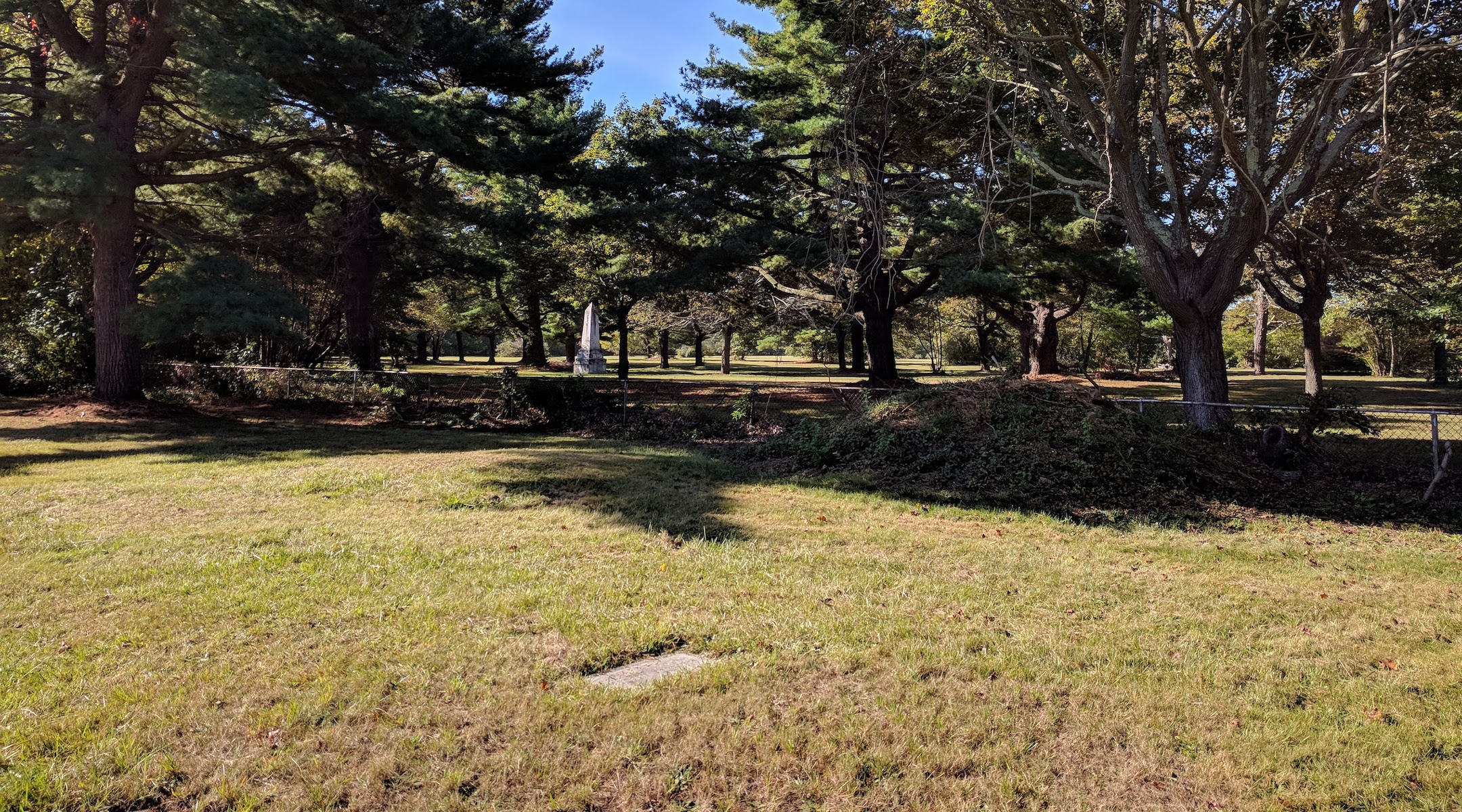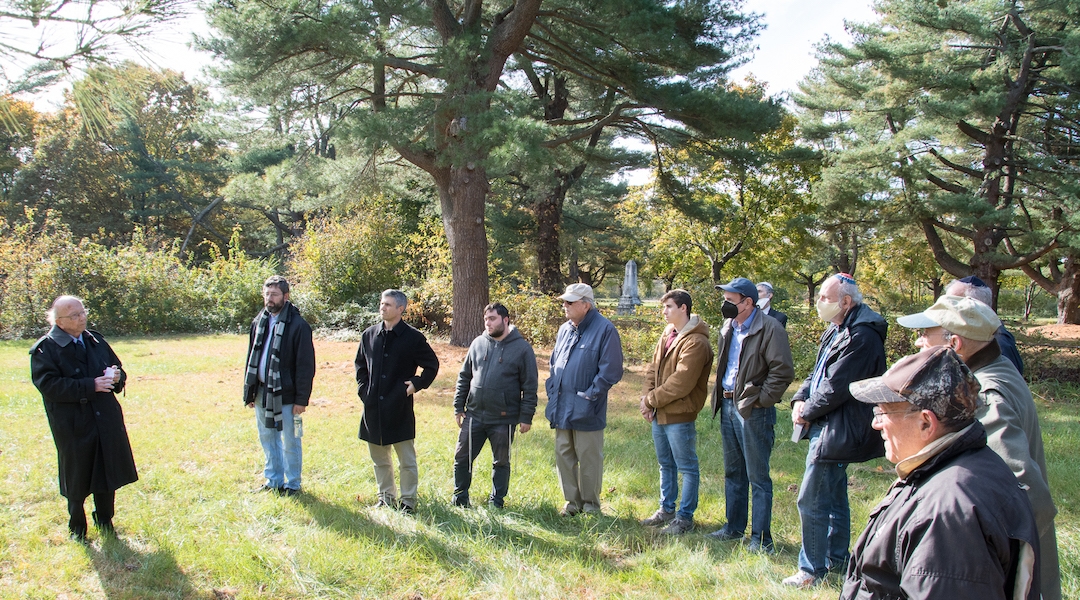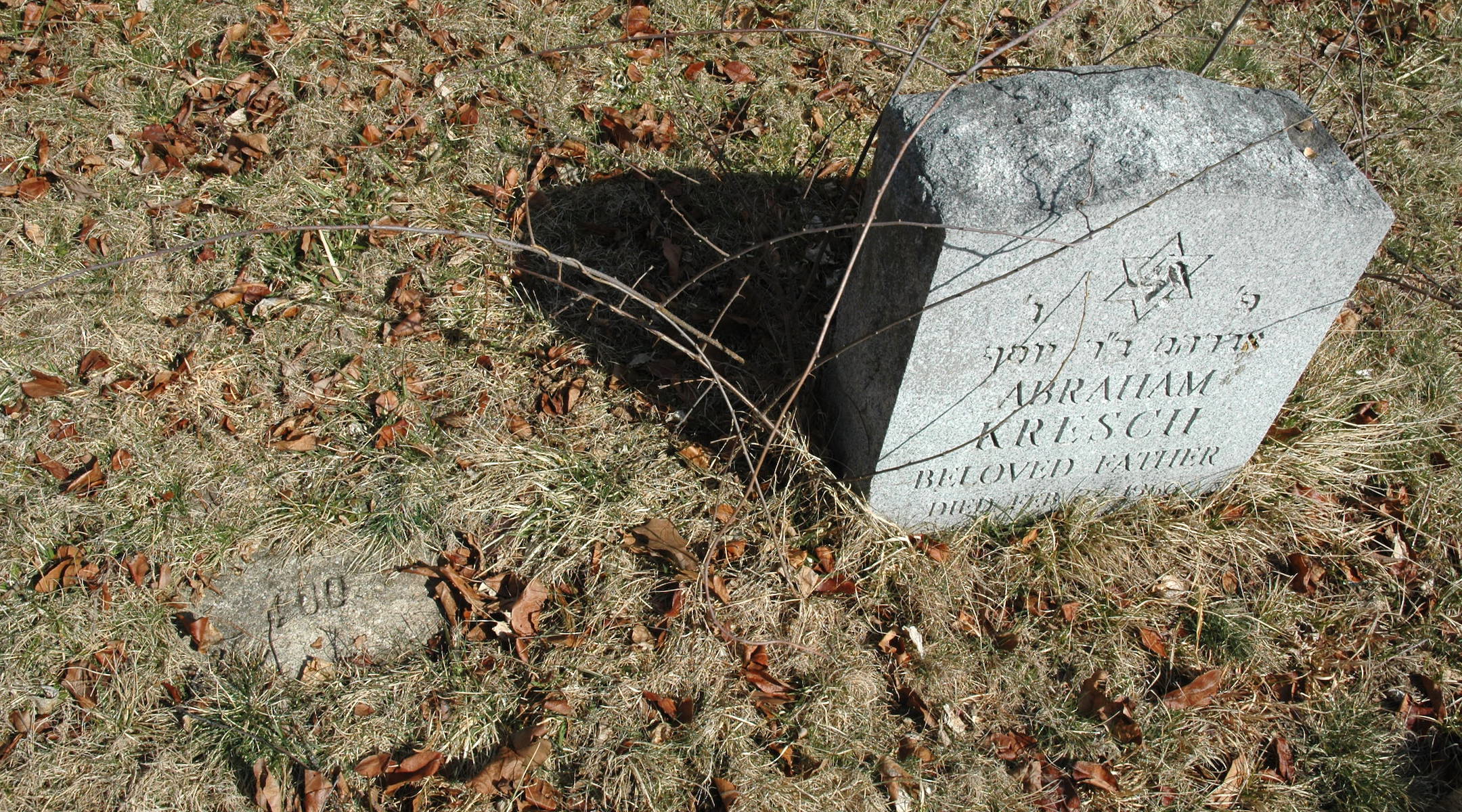(New York Jewish Week via JTA) – While researching his family tree, Brian Madigan of Locust Grove, Va., found something odd: Although his maternal great-great-grandfather lived in Brooklyn, he was buried in East Islip, on Long Island in New York.
Further research revealed that his relative, Napoleon Hedemark, had been committed to Islip Central Psychiatric Center sometime before 1900. He died there on November 21, 1916, aged 72. He was buried in his cemetery with just a number to designate his grave.
Several weeks ago, Madigan wrote to the New York State Office of Mental Health requesting a copy of her loved one’s “complete file” to find out the circumstances that led to his being committed, the location of his grave and a copy of his photograph.
“I’m just looking for some sort of closure,” Madigan, 63, said. “I am planning to go there and would like to know the location of his grave so that I can erect a marker [with Hedemark’s name]. I cannot accept that the graves of my ancestors are not marked.
Madigan, a defense contractor, could get it shut down — thanks to a twice-delayed deal between a Jewish-affiliated law school and the Office of Mental Health. Before the COVID pandemic hit, they had agreed to tend to the Jewish and non-Jewish parts of the cemetery and to help relatives who believe a loved one is buried there.
For Napoleon Hedemark and other former patients buried at the cemetery, it is an opportunity to restore the dignity to the dead that may have been denied them during the 120-year history of what had been one from largest psychiatric hospitals in the United States. The unrecognized dead include Holocaust survivors, who twice in their lifetime were given numbers instead of names.
Madigan was referred to the state by Sam Levine, director of the Institute of Jewish Law at the Touro Law Center, which was built on part of the mental hospital’s property after it closed in 1998. The cemetery is all what remains of the hospital, which was opened in 1889. The cemetery holds the graves of approximately 5,500 former patients not only from the Central Islip facility, but also from Kings Park and Pilgrim State psychiatric hospitals. After Central Islip Hospital closed, the state fenced off the cemetery, restricted public access, and provided mowing and cleaning.
Shortly after Touro opened in 2007 as a a school of law “conforming to Jewish tradition”, Ken Rosenblum, then the school’s associate dean of admissions, walked through the school’s south gate and saw a rusty fence at the end of the parking lot.
Pushing aside the overgrown brush, he began to walk through a seemingly empty field until he realized he was walking over rectangular, low-lying graves and stones with numbers on them. He then saw two iron gates covered in vines, each marked with a rusty Star of David.
While Rosenblum was unaware that there was a Jewish cemetery with some 500 graves in Touro’s backyard, others remembered it. The Jewish section was dedicated in 1980 by Rabbi Melvyn Lerer, the former Jewish chaplain at the psychiatric center. He had raised money for the restoration of the cemetery, the installation of the gate with the Star of David and the purchase of suitable headstones for all future internments, which numbered around 100 until the closing. of the hospital.
Ben Etkin, president of the Men’s Club at the North Shore Jewish Center in Port Jefferson, Long Island, said that every year for the past 30 years, the Men’s Club has held a ceremony in the Jewish section of the cemetery in which they recite the Mourner’s Kaddish for those buried there.

The Jewish cemetery at the former Central Islip Psychiatric Center on Long Island features small stones, many of which are engraved only with numbers, marking the graves of many of the 500 Jewish patients buried there. (Patricia Desrochers/Touro Law Center)
“We never failed to have a minyan. These people have no one to say Kaddish for them,” he said. “We go there every year after the summer holidays. We walk around and clean some of the foot stones that have been covered. And we tell some anecdotes. The people buried there deserve it. It’s a shame they were buried under a single number.
Until a few years ago, Rabbi Lerer attended this annual ritual and often remarked that those buried there were forgotten in life and cast aside in death, Levine said.
In an interview, Lerer, 92, suggested how many people would come to be buried in a hospital cemetery, without even a name to remind people who they were. “Most of them were deprived of families,” said Lerer, who retired in 2018 after 42 years as a the Jewish chaplain at Pilgrim State and before that at Central Islip. “Many had been in the hospital for 40, 50 or 60 years, and they were the only ones left in their families.”
Some families were also “embarrassed to have a relative in a mental hospital and therefore did not want to claim the body. So I arranged the funeral and for the chevra kadisha [burial society] of the chapels of Shomrei Hadas in Borough Park. At each funeral, it was just me, the guy who died and the gravedigger.
Hired at Central Islip in 1976, Lerer, he met with the assistant director of the hospital and quickly had an area designated as a Jewish cemetery.
From then on, each person buried in the Jewish cemetery had a headstone which contained a Jewish star, their name in English, the date in Hebrew and English, and the words in Hebrew: “Let their souls be bound by the bond of life eternal.”
In October 2013, the law school and the state signed their agreement in which the Office of Mental Health agreed to restore the cemetery and help relatives identify ancestors who rest under numbered stones. The project was delayed for several years before being revived in 2019.
There were plans “to have a big event where we would erect a historical marker at the cemetery, but then COVID came along and that was no longer a priority,” Levine added.
James Plastiras, spokesperson for the Office of Mental Health, said the project was once again underway and would include a historical marker and the paving of an existing footbridge.

Members of the North Shore Jewish Center Men’s Club in Port Jefferson, New York, hold a ceremony in the Jewish section of the cemetery of what had been the Central Islip Psychiatric Center, November 11, 2021. (Ray Cella)
He added that families are free to erect approved markers on relatives’ graves “once direct lineage has been established”. through the records department of the controlling institution.
Rosenblum, who is now retired, also noted that some of those buried at the cemetery were Holocaust survivors.
“I felt so moved to get involved with the cemetery when I learned that Holocaust survivors were buried there,” Rosenblum said. “That’s one of the reasons I’ve been pestering myself to get funding for a nice new fence.… We want to pave the center aisle and put in some benches so the students can use it as a place of quiet reflection and there would be limited public access.
—
The post office Figures mark graves in the Jewish cemetery of a former psychiatric hospital. Families want names – and answers. appeared first on Jewish Telegraph Agency.

